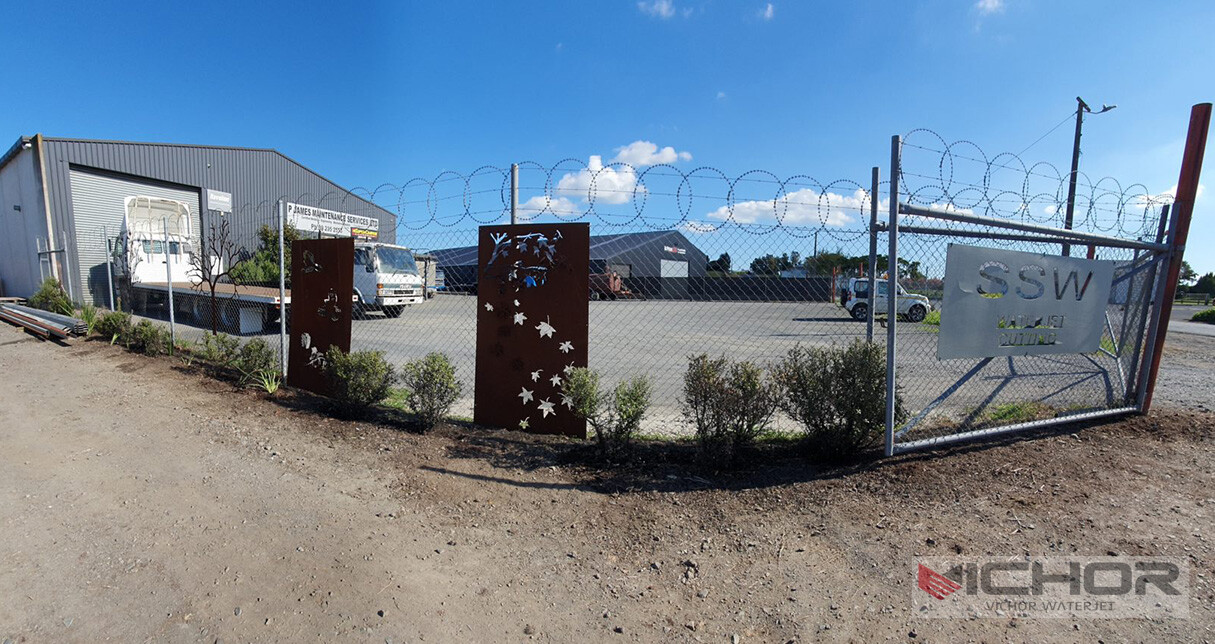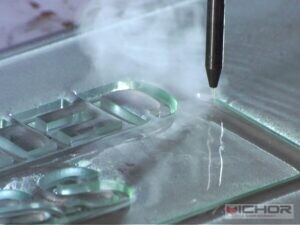
The Ultimate Guide to Affordable Waterjet Cutting Machines: Unlocking Precision Without Breaking the Bank
For decades, waterjet cutting technology was synonymous with massive industrial machines carrying equally massive price tags, placing it out of reach for smaller businesses, workshops, and serious hobbyists. However, the landscape has dramatically shifted. Today, affordable waterjet cutting machine options are revolutionizing access to this incredibly versatile and precise cutting technology. No longer confined to Fortune 500 factories, waterjet cutting is becoming a realistic and powerful tool for a much broader audience. This comprehensive guide delves deep into the world of affordable waterjet cutting machine solutions, exploring what makes them accessible, their capabilities, and how they can transform your fabrication processes.
Understanding the Shift: What Makes a Waterjet “Affordable”?
The term “affordable” is relative, especially in capital equipment. In the context of waterjets, it signifies a significant reduction in the entry barrier compared to traditional industrial systems costing hundreds of thousands of dollars. Several factors contribute to this affordability:
Simplified Design: Entry-level machines often feature less complex frames, linear guide systems instead of expensive hardened rails, and simplified cutting tables.
Lower-Pressure Pumps: While ultra-high pressure (60,000-90,000 PSI) pumps deliver maximum speed, affordable waterjet cutting machine models frequently utilize robust, reliable pumps operating in the 40,000-60,000 PSI range. These pumps are less expensive to manufacture and maintain while still delivering excellent cutting performance on a wide range of materials.
Reduced Footprint: Smaller machines require less space and less material to build, contributing to lower costs.
Focus on Core Features: Manufacturers streamline offerings, focusing on essential cutting capabilities without the high cost of optional automation, ultra-large work envelopes, or complex material handling systems initially.
Technology Maturation: As core waterjet technology (pumps, controls, nozzles) matures and production volumes increase, economies of scale help drive prices down.
The result is a new class of waterjet cutters available in the tens of thousands of dollars, rather than hundreds of thousands, making the precision and versatility of waterjet technology genuinely accessible.
Defining “Affordable” – Price Ranges and Machine Types
So, what price range defines an affordable waterjet cutting machine? While exact figures fluctuate, consider these general brackets:
Entry-Level Benchtop/Small Format (e.g., OMAX ProtoMAX, WAZER): Starting around $15,000 – $40,000+. These are compact machines, often with smaller work envelopes (e.g., 1′ x 1′ to 2′ x 4′), designed for prototyping, small parts, educational use, or small businesses. They typically use direct-drive pumps (simpler, lower pressure) or smaller intensifier pumps.
Mid-Range Standard Industrial (e.g., OMAX GlobalMAX, Wardjet E Series, Jet Edge iP60 Series): Ranging from $60,000 – $150,000+. This is the sweet spot for many small to medium-sized businesses. These offer larger work areas (e.g., 4′ x 4′ to 5′ x 10′), higher pressure pumps (50k-60k PSI), more robust construction, faster cutting speeds, and greater material thickness capacity than benchtop models. They represent a significant step up in capability while remaining considerably more affordable than premium industrial giants.
Refurbished/Used Market: Significant savings can be found here, potentially bringing machines originally in higher brackets into the “affordable” range for buyers comfortable with pre-owned equipment. Prices vary wildly based on age, condition, and specifications.
It’s crucial to look beyond the initial machine price tag. True affordability encompasses the total cost of ownership (TCO).
Capabilities and Limitations – What Can an Affordable Waterjet Actually Do?
Don’t mistake affordability for lack of capability. Modern affordable waterjet cutting machine models are highly capable:
Material Versatility: They cut virtually any material: metals (steel, stainless, aluminum, brass, titanium, tool steel), plastics, composites, stone, glass, tile, rubber, foam, and food products. This “one tool, many materials” advantage is a key benefit.
Precision: Expect excellent accuracy and repeatability, often within +/- 0.003″ to +/- 0.010″ or better, depending on the machine class and calibration. Edge quality is typically very good to excellent.
No Heat-Affected Zone (HAZ): Like all waterjets, affordable models produce no heat during cutting. This preserves material properties, prevents hardening or warping in metals, and allows cutting of heat-sensitive materials like plastics and explosives.

Intricate Details: Waterjets excel at complex shapes, sharp corners, and fine details that are difficult or impossible with thermal cutting methods.
Thickness Capacity: While top-tier industrial jets cut incredibly thick materials (12″ steel+), affordable machines are still potent. Expect capabilities like:
Benchtop: 1/4″ – 1/2″ steel, thicker in softer materials.
Mid-Range Industrial: 1″ – 3″+ steel, significantly thicker in aluminum, stone, etc.
Limitations to Consider:
Cutting Speed: This is the primary trade-off. Affordable machines, especially with lower-pressure pumps, cut slower than their high-pressure, high-horsepower industrial counterparts, particularly on thick, hard metals. Speed is adequate for many applications but may be a bottleneck for very high-volume production.
Work Envelope: Benchtop models have limited table size. Mid-range offers good size but may not handle extremely large plates like premium 10′ x 20’+ tables.
Taper: All abrasive waterjets produce some degree of taper (wider kerf at bottom than top), especially on thicker materials. Affordable machines may exhibit slightly more taper or require more careful calibration to minimize it compared to ultra-high-end systems, but it’s manageable.
Pump Longevity: Lower-cost pumps might have a shorter operational lifespan or require more frequent maintenance intervals than premium ultra-high-pressure pumps, impacting long-term TCO.
Operating Costs – The True Measure of Affordability
The purchase price is just the beginning. Evaluating an affordable waterjet cutting machine requires careful consideration of operating expenses:
Abrasive (Garnet): This is the single largest ongoing cost for abrasive waterjet cutting. Consumption is measured in pounds per hour. Affordable machines using lower pressures might use slightly less garnet per hour than ultra-high-pressure jets cutting the same material, but garnet cost remains significant. Efficient nesting and optimized cutting parameters are crucial for cost control.
Electricity: Waterjet pumps are power-hungry. A 30-50 HP pump on a mid-range affordable machine will consume considerably less power than an 80-100+ HP pump on a premium industrial system, leading to lower electricity bills.
Water: Requires clean, filtered water. Consumption is moderate but adds to utility costs. Closed-loop filtration systems are available but add complexity and cost.
Maintenance & Parts:
Consumables: Orifice jewels (very small sapphire or diamond), mixing tubes (fused silica or carbide), high-pressure seals, and valves wear out and need regular replacement. Costs vary by machine and usage intensity.
Pump Maintenance: Regular preventative maintenance (seal kits, fluid changes, filter replacements) is essential for pump longevity. Simpler pumps on entry-level machines might have lower maintenance costs than complex ultra-high-pressure intensifiers.
Motion System: Bearings, guides, and drives require periodic inspection and lubrication/replacement.
Labor: Requires trained operators for programming, setup, operation, and maintenance. Efficiency gains from the machine can offset labor costs elsewhere.
Key Takeaway: While the initial purchase is lower, carefully factor in abrasive consumption, electricity, and planned maintenance when calculating the true affordability and ROI of any waterjet system. A slightly higher upfront cost for a more robust machine with lower operating costs can be more economical long-term.
Ideal Applications – Where Affordable Waterjets Shine
Affordable waterjet cutting machine systems are perfect fits for numerous scenarios:
Job Shops & Contract Manufacturers: Offering waterjet services dramatically expands the range of materials and part geometries you can accept, attracting new customers without a massive capital outlay.
Small & Medium-Sized Manufacturers (SMMs): Bringing waterjet cutting in-house for prototyping, low-to-medium volume production, or fabricating custom fixtures/jigs eliminates outsourcing delays and costs.
Prototyping Labs & R&D Departments: Quickly and precisely iterate designs across diverse materials without thermal distortion.
Artists, Sculptors & Sign Makers: Cut intricate designs in metal, stone, glass, and composites for unique artwork and signage.
Aerospace & Defense (Tier 2/3 Suppliers): Cutting composites, titanium, and high-strength alloys for components without damaging material properties.
Automotive (Aftermarket & Custom): Fabricating custom brackets, gaskets, interior components, and decorative elements from various materials.
Educational Institutions (Vocational Schools, Universities): Teaching advanced manufacturing techniques without the prohibitive cost of industrial-scale equipment.
Food Processing (Niche Applications): Cutting frozen foods, cakes, or other products cleanly and hygienically.
Essentially, any application requiring precise, cold cutting of diverse materials in low-to-medium volumes is a strong candidate for an affordable waterjet cutting machine.
Key Considerations When Purchasing Your Affordable Waterjet
Choosing the right affordable waterjet cutting machine requires careful evaluation:
Primary Materials & Thicknesses: Define what you need to cut most often and how thick. This dictates the required pump pressure, horsepower, and abrasive delivery system.
Part Size & Work Envelope: Measure your typical workpieces. Ensure the machine’s table (X, Y) and Z-axis clearance (under the cutting head) comfortably accommodate them, with room for fixtures.
Required Precision & Tolerances: Discuss your accuracy needs with manufacturers. Higher precision often requires more robust motion systems and calibration.
Production Volume & Desired Cutting Speed: Be realistic about throughput requirements. Affordable machines are generally not for ultra-high-volume production lines. Compare cutting speed specs for your target materials/thicknesses.
Available Space & Utilities: Measure your floor space, including room for operation, maintenance, and material handling. Ensure adequate electrical supply (voltage, phase, amperage) and clean water access/drainage.
Software & Controls: User-friendly CAD/CAM software is crucial. Evaluate the interface, nesting capabilities, ease of programming, and post-processor quality. Look for intuitive controls.
Support & Service: This is critical. Investigate the manufacturer’s reputation. What is warranty coverage? How extensive is their service network? Availability and cost of spare parts? Training offered? Strong local support is invaluable.
Total Cost of Ownership (TCO): Go beyond the sticker price. Model costs for garnet, electricity, water, routine maintenance parts (orifice, tubes, seals), and potential pump rebuilds over 3-5 years. Compare TCO between shortlisted models.
New vs. Refurbished: Weigh the benefits of a new machine (full warranty, latest tech) vs. a quality refurbished unit (lower price, potentially proven reliability). Inspect refurbished units thoroughly and understand the refurbishment scope.
The advent of the affordable waterjet cutting machine is a game-changer. It breaks down the financial barriers that once prevented countless businesses and innovators from accessing one of the most versatile and precise cutting technologies available. By understanding the price points, capabilities, limitations, operating costs, and ideal applications outlined in this guide, you can make an informed decision about whether an affordable waterjet is the right tool to elevate your fabrication capabilities, expand your service offerings, and unlock new creative or manufacturing possibilities. While compromises exist, primarily in speed for the thickest materials, the core benefits – cold cutting, material versatility, precision, and intricate detailing – are now firmly within reach, empowering a new generation of makers and manufacturers. Investing in an affordable waterjet cutting machine is an investment in flexibility, capability, and future growth.
continue reading
Related Posts
- 1371 words6.9 min read
- 1449 words7.3 min read



